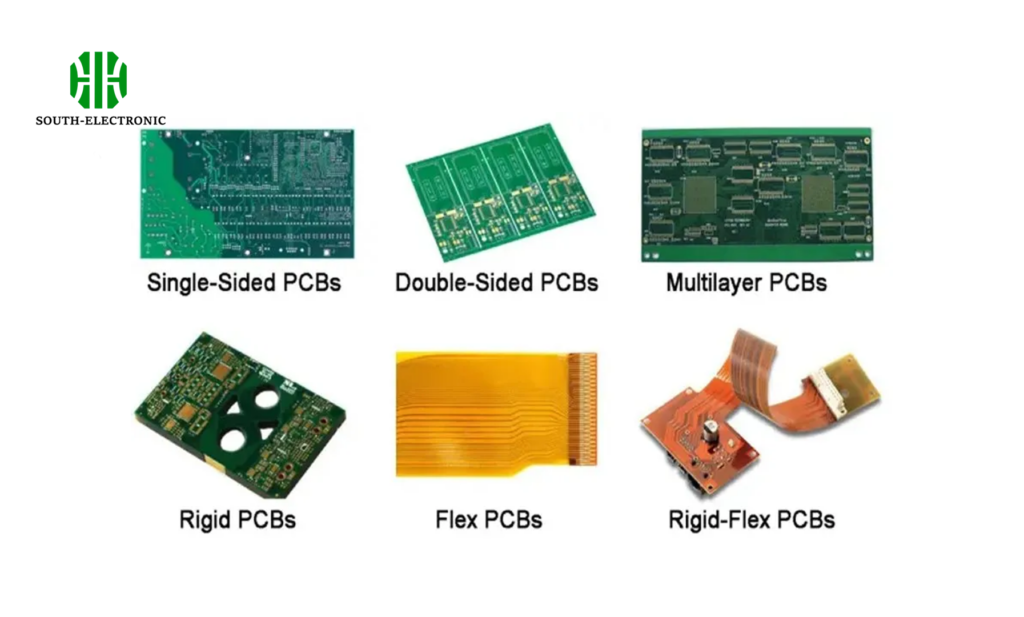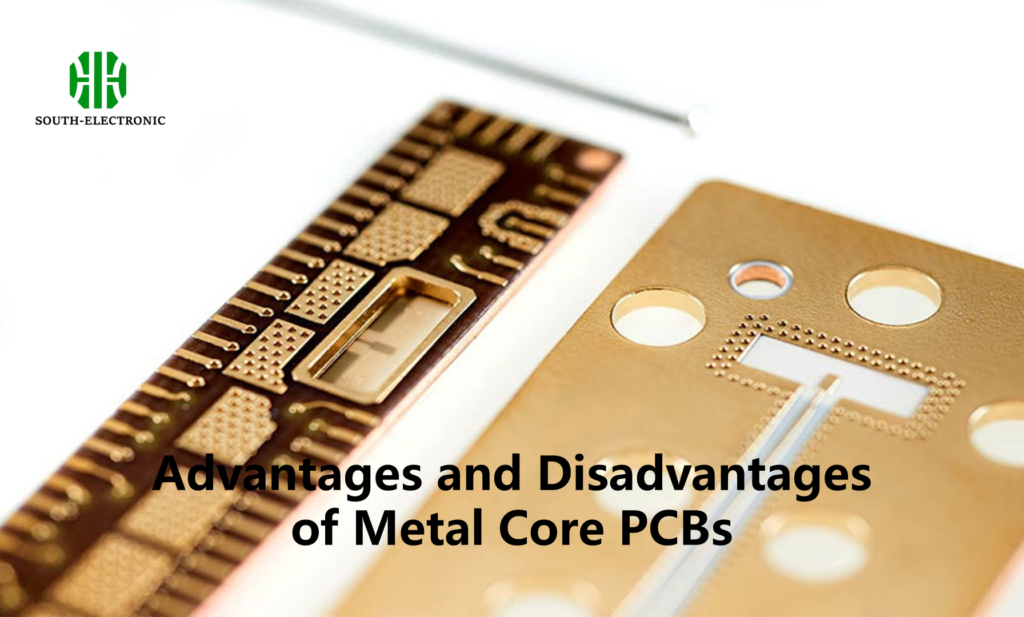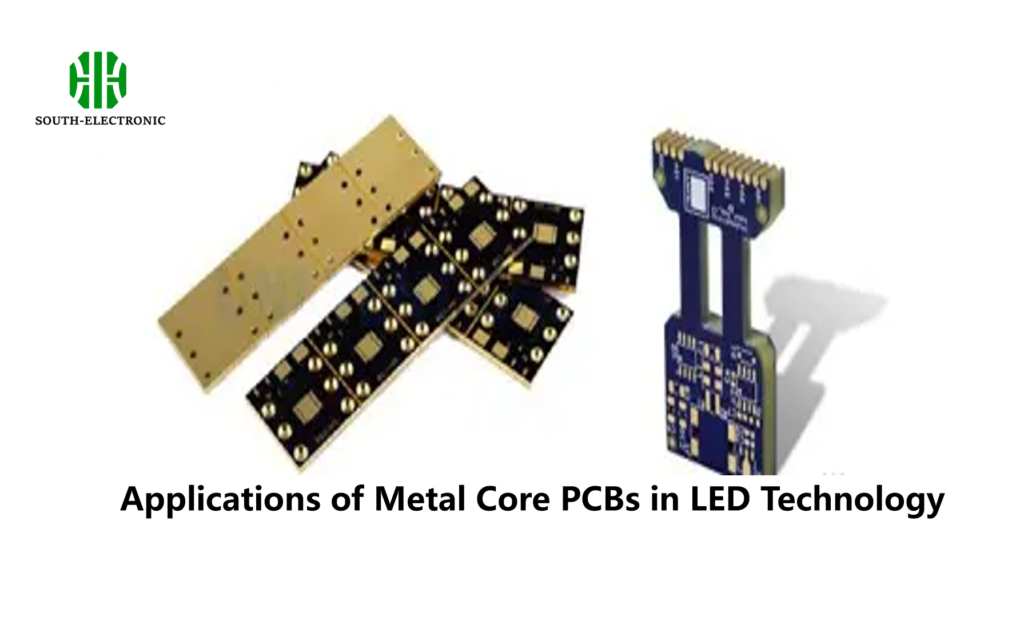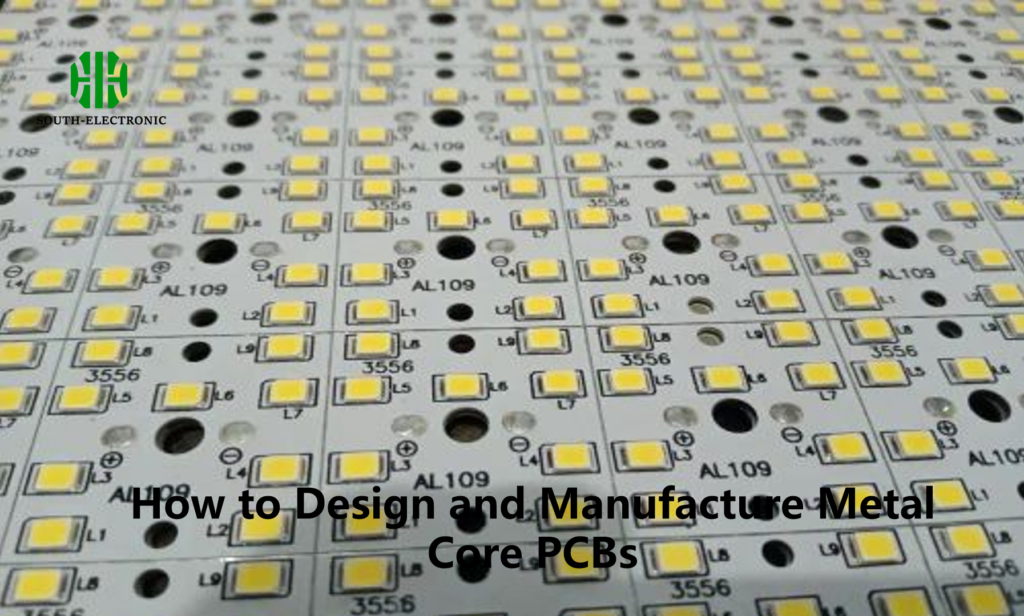What is the difference between PCB and metal core PCB?
The big difference between a PCB and a Metal Core PCB (MCPCB) is in how they handle heat. A regular PCB is made of non-conductive materials like fiberglass, which means it can’t get rid of heat very well. On the other hand, an MCPCB has a metal core, usually aluminum or copper, which makes it way better at getting rid of heat. That’s why MCPCBs are great for high-power stuff where you need to keep things cool.
What is a PCB?
A Printed Circuit Board (PCB) is a board that supports and connects electronic components. It is made of a non-conductive material (usually fiberglass) with layers of copper traces that connect the components.
Types of PCBs
- Single-Sided PCB: Features a single layer of conductive copper and components mounted on one side only.
- Double-Sided PCB: Has conductive copper layers on both sides, allowing components to be mounted on either side.
- Multi-Layer PCB: Consists of multiple layers of copper and insulating material, used for complex, high-density circuits.
- Rigid PCB: Made from solid materials that don’t flex, offering mechanical support.
- Flexible PCB: Made from flexible materials like polyimide, allowing the board to bend and flex.
- Rigid-Flex PCB: Combines rigid and flexible materials, used in complex designs where flexibility and rigidity are both required.

What is a Metal Core PCB?
A Metal Core PCB (MCPCB), also called a thermal PCB or metal-backed PCB, has a layer of metal built into the board. This metal layer, usually aluminum or copper, provides better thermal conductivity, which makes MCPCBs perfect for applications where heat dissipation is important.
Construction of Metal Core PCBs
- Metal Layer: The metal core, usually aluminum or copper, is integrated into the PCB to provide a path for heat dissipation.
- Dielectric Layer: A thermally conductive but electrically insulating layer separates the metal core from the circuit layers.
- Circuit Layer: The top layer is made of copper and forms the electrical circuit pathways.

Key Differences Between PCB and Metal Core PCB
| Feature | Standard PCB | Metal Core PCB |
|---|---|---|
| Core Material | Fiberglass, Plastic | Aluminum, Copper |
| Heat Dissipation | Limited | High |
| Applications | General electronics | High-power, heat-sensitive devices |
| Cost | Lower | Higher |
| Weight | Lighter | Heavier |
Advantages and Disadvantages of Metal Core PCBs
Advantages
- Superior Heat Dissipation: Metal Core PCBs are designed to efficiently dissipate heat, which is critical in high-power and high-temperature applications.
- Mechanical Stability: The metal layer adds rigidity, making the PCB more durable and resistant to mechanical stress.
- Higher Power Capacity: Ideal for applications that require handling large currents or power outputs, as the metal core prevents overheating.
Disadvantages
- Cost: The inclusion of a metal core makes these PCBs more expensive to manufacture than standard PCBs.
- Weight: The metal layer increases the overall weight of the PCB, which may be a disadvantage in applications where weight is a critical factor.
- Manufacturing Complexity: The production process for Metal Core PCBs is more complex, requiring specialized equipment and processes.

Applications of Metal Core PCBs in LED Technology
LEDs are known for their energy efficiency and long lifespan, but they also generate significant heat. Metal Core PCBs are an excellent solution for managing this heat, ensuring that LEDs perform optimally and last longer.
Benefits in LED Applications
- Thermal Management: The metal core efficiently dissipates heat generated by the LEDs, preventing thermal degradation.
- Longevity: By maintaining a lower operating temperature, Metal Core PCBs help extend the lifespan of LEDs.
- Efficiency: LEDs mounted on Metal Core PCBs operate more efficiently as the heat is rapidly dissipated, maintaining optimal performance levels.

How to Design and Manufacture Metal Core PCBs?
Design Considerations
When designing a Metal Core PCB, several key factors must be considered to ensure optimal performance:
- Thermal Management: Proper placement of components and careful design of the thermal pathways are crucial to ensure efficient heat dissipation.
- Component Placement: Heat-generating components should be placed close to the metal core to maximize heat transfer.
- Layer Stackup: The layer stackup should be designed to balance electrical performance with thermal management, considering the thermal and electrical needs of the application.
Manufacturing Process
The manufacturing process of Metal Core PCBs involves several specialized steps:
- Material Selection: Choosing the appropriate metal core (aluminum or copper) based on the application’s thermal and mechanical requirements.
- Lamination: The metal core is laminated with the dielectric and copper layers, ensuring strong adhesion and thermal conductivity.
- Drilling and Plating: Holes are drilled for vias, which are then plated to ensure electrical connectivity. Special care is taken to avoid short circuits with the metal core.
- Surface Finishing: The PCB is finished with solder mask and silkscreen, protecting the circuitry and providing a clean, professional appearance.

Metal Core PCB vs. HDI PCB: Which One to Choose?
When deciding between a Metal Core PCB and an HDI (High-Density Interconnect) PCB, it’s important to consider the specific needs of your project:
- Choose Metal Core PCB if your application involves high-power components that generate significant heat and require efficient thermal management.
- Choose HDI PCB if your application demands a compact design with fine lines, small vias, and high component density, such as in advanced consumer electronics.
Common Misconceptions about Metal Core PCBs
Despite their widespread use, several misconceptions surround Metal Core PCBs:
Misconception 1: Metal Core PCBs are only for LED applications. While MCPCBs are popular in LED lighting, they are also used in automotive, industrial, and aerospace applications where effective heat management is essential.
Misconception 2: Metal Core PCBs are too expensive for most projects. Although they are more costly, their benefits in specific applications often justify the investment, particularly in high-power and heat-sensitive environments.



